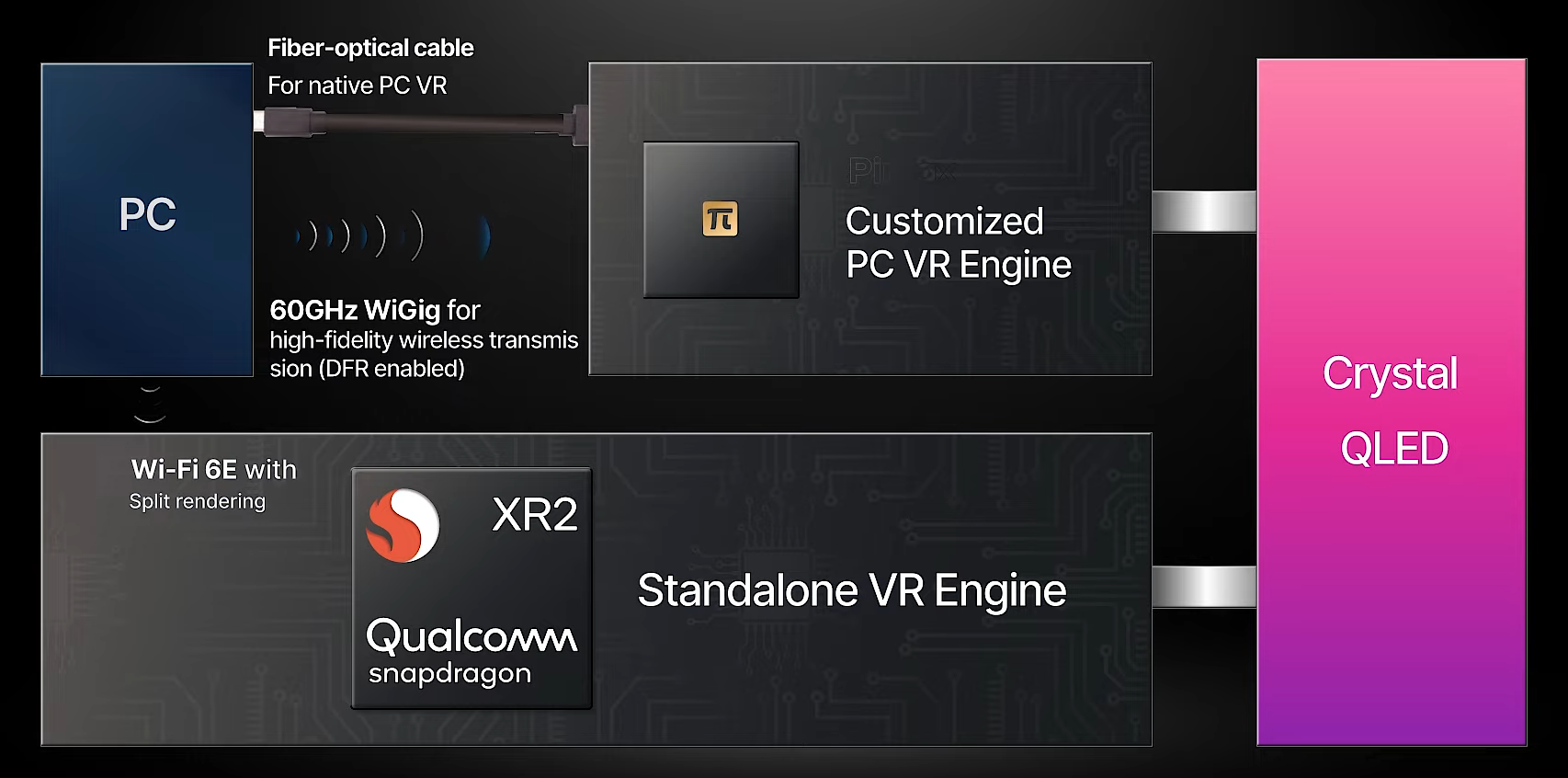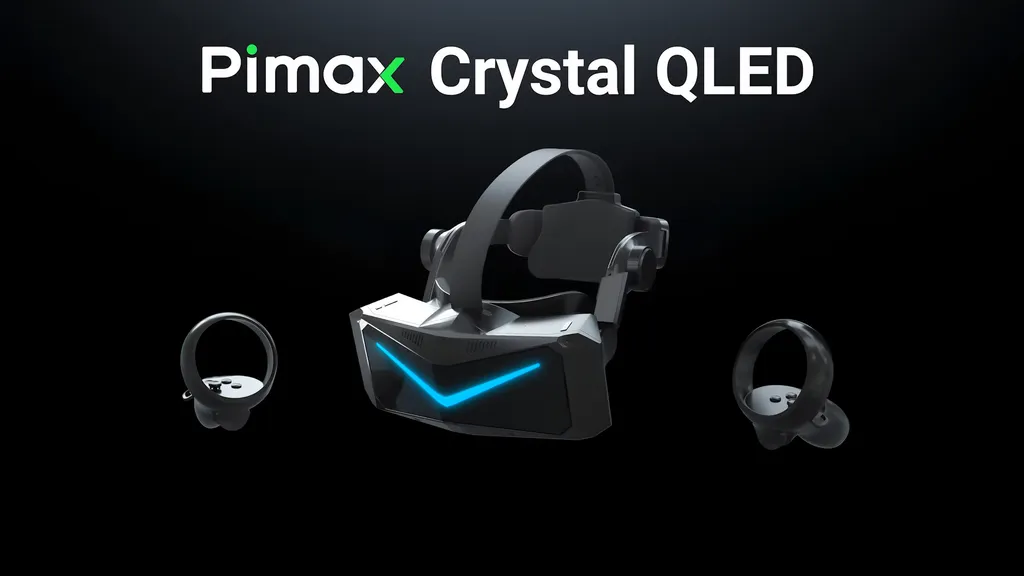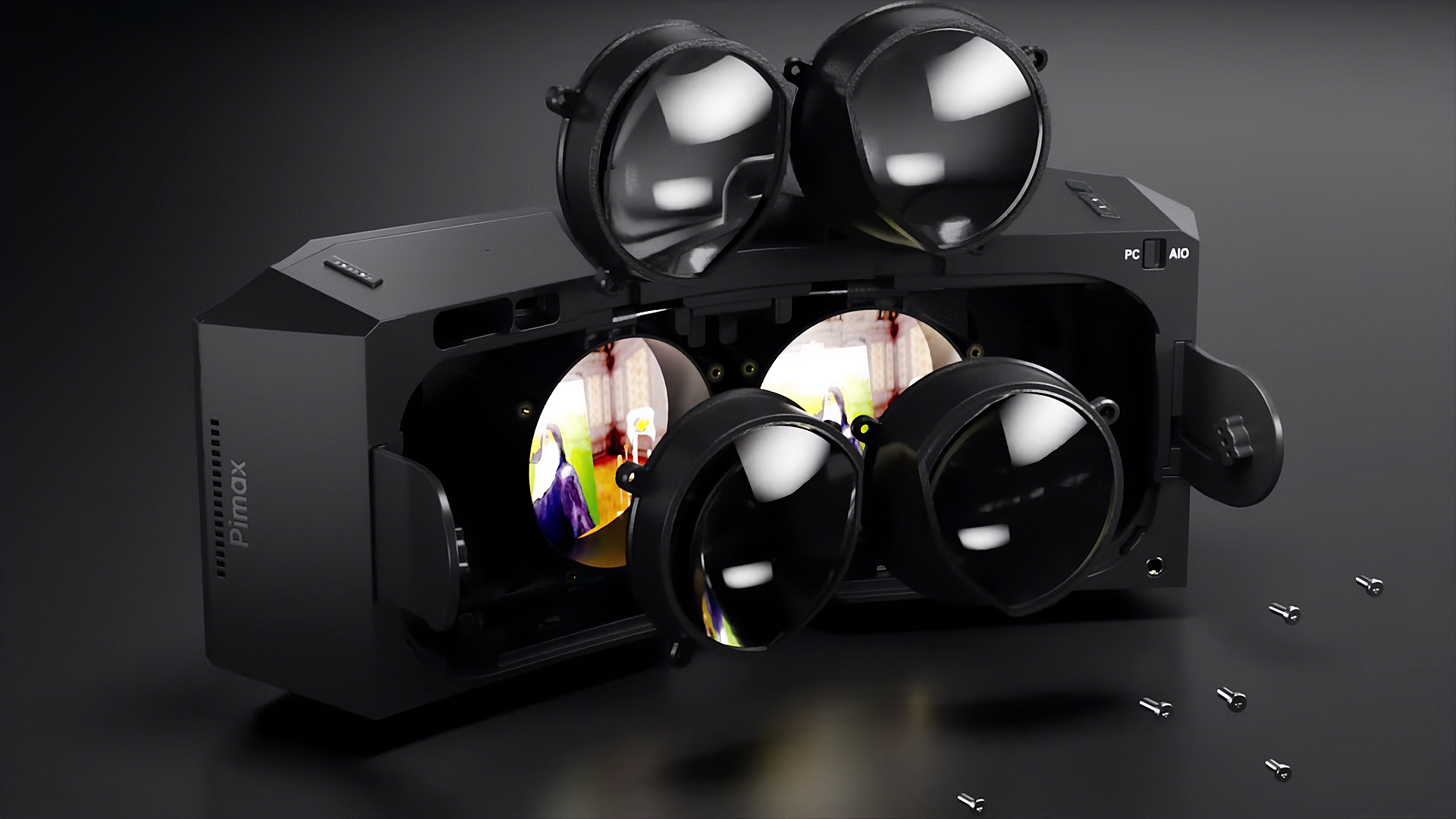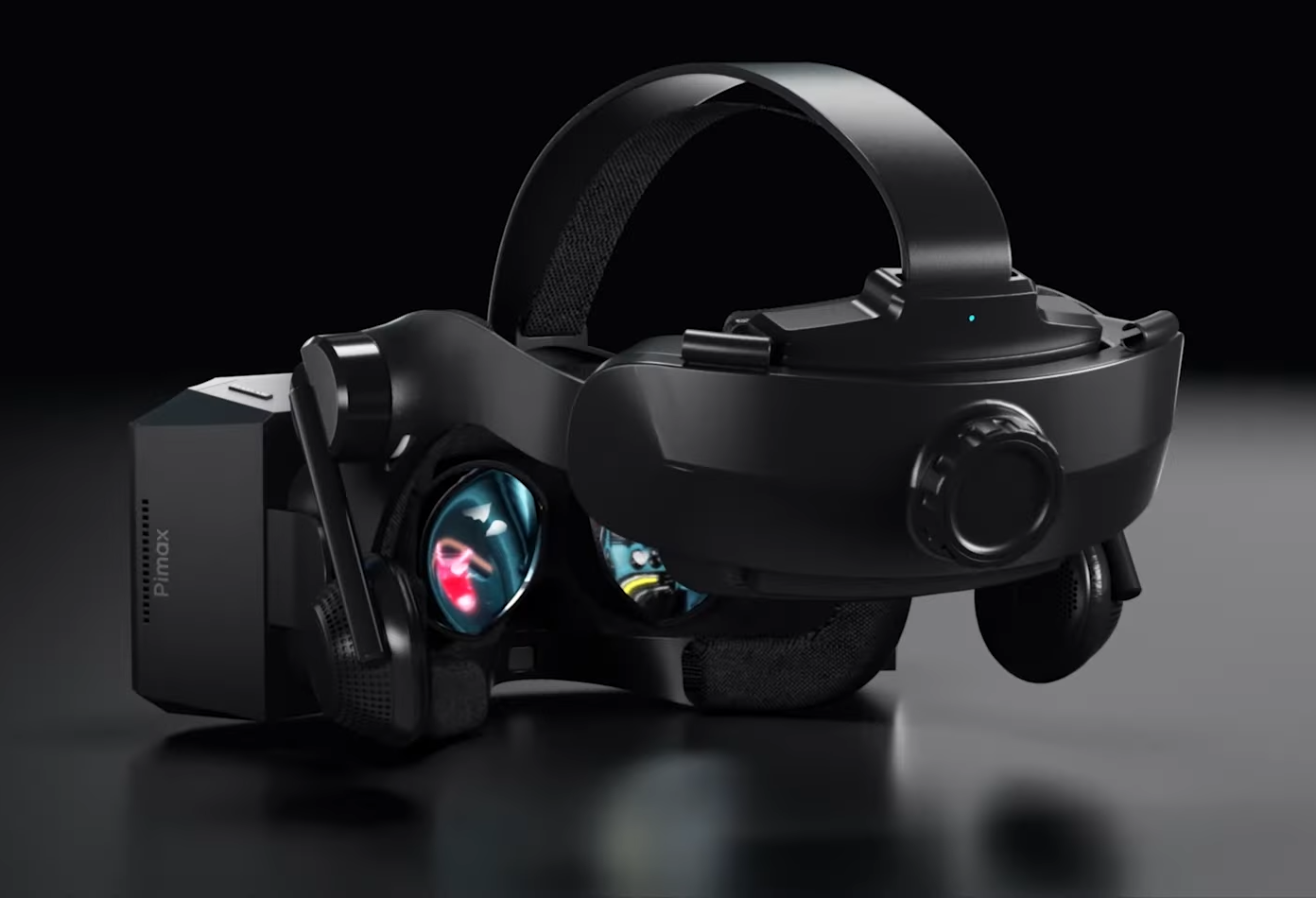Pimax announced Pimax Crystal QLED, a $1899 dual-mode VR headset the company claims will have the highest angular resolution on the consumer market.
Crystal will feature dual 2880×2720 LCD panels with Mini LED backlighting and a quantum dot layer. While traditional small LCD panels use a single backlight behind the entire display, Mini LED instead uses thousands of tiny LED elements, delivering contrast levels close to OLED – though with the tradeoff of some blooming. The quantum dot layer should deliver an extremely wide color range, which Pimax claims surpasses even OLED. The maximum refresh rate is 160 Hz.
Crystal’s lenses are made from glass rather than the plastic used in most other headsets, which Pimax says increases brightness and reduces both glare & aberration. The default lenses have a horizontal field of view of 110°, roughly the same as the Valve Index. This is a departure from Pimax’s core brand of ultra wide field of view VR. But Crystal’s unique feature is it will come with a different pair of 120° field of view lenses that can be swapped in, so you can choose between clarity and immersion.
Back in October Pimax announced another standalone headset, Reality 12K QLED, which it said will ship in Q4 2022 for $2399. Reality will also uses QLED panels but promises a much wider 200 degree field of view and onboard body tracking. This begs the question: what kind of buyer is willing to pay $1900 but not $2400 for a significantly wider field of view? Pimax’s response is that Crystal’s focus is on achieving maximum visual clarity, and that it doesn’t require a monster GPU like Reality.
Other than the lenses and displays Crystal and Reality are very similar headsets. Both have four cameras on the front edges for inside-out tracking of the headset and its Touch-like controllers – or your hands freely – as well as internal cameras to track your eyes and face. The eye tracking is said to power automatic lens separation adjustment and dynamic foveated rendering. Both headsets also use the same Snapdragon XR2 processor as Meta’s Quest 2. An extra cooling fan and dynamic foveated rendering mean they should outperform Quest 2, but this may be negated by the higher resolution and wider field of view it needs to render.

Also like Reality, Crystal supports two separate PC VR modes. The standard method sends frames over your home Wi-Fi network similar to Oculus Air Link or Virtual Desktop. The high fidelity mode uses a DisplayPort cable or dedicated WiGig transmitter for a much higher bandwidth connection. The cable is included but the WiGig transmitter will be sold separately.
Pimax sees Crystal as competing with Varjo Aero. As Pimax points out, the $1990 Aero has the same resolution but doesn’t come with tracking, controllers, or audio – and doesn’t have a wireless or standalone mode.
The company will likely struggle to obtain compelling content for its standalone mode store, however. Reality was announced with two standalone games: Ragnarok and Hyperstacks. Crystal is being announced with three more: BRINK Traveler, cyubeVR, and BoomBox. None of these are exactly system sellers and it’s likely these headsets will be primarily used in PC mode, but Pimax is still asking interested developers to reach out.
Pimax claims Crystal QLED will start shipping in Q3 2022, between July and September. We should, however, note Pimax has in the past missed its shipping targets, and the ongoing global supply chain uncertainties have led to delays across the tech industry.





























